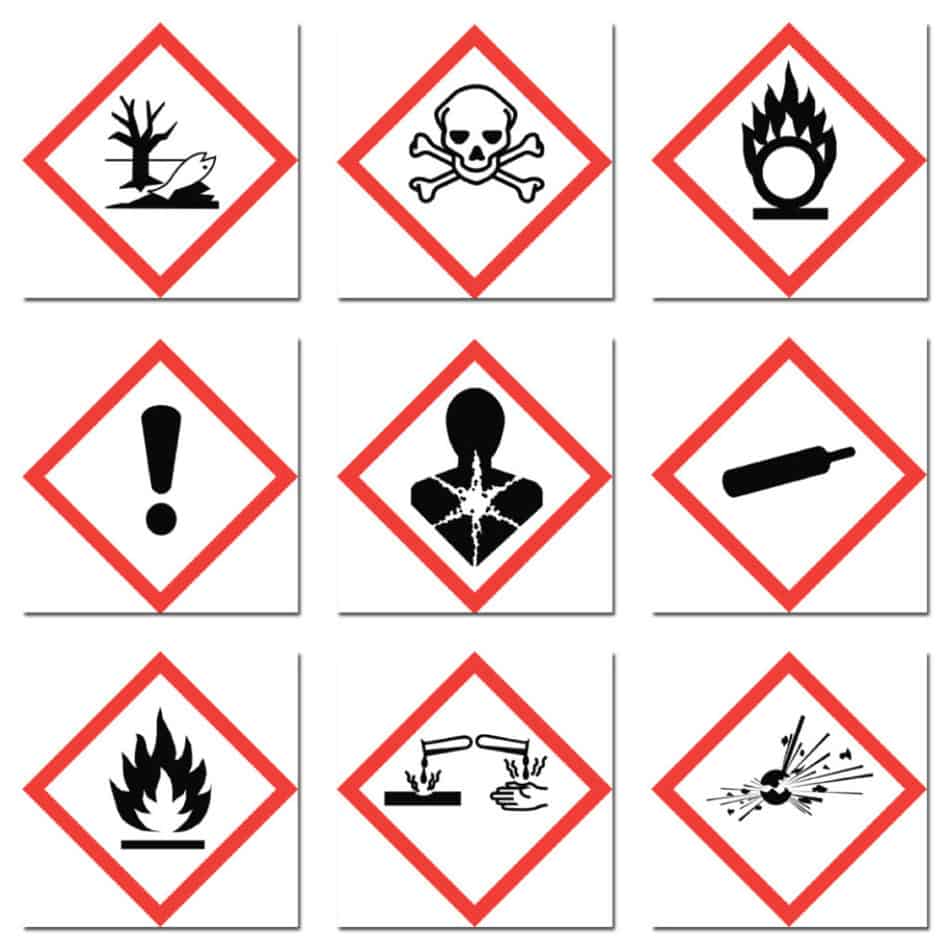Although in my articles I mainly deal with organic pesticides, it is good to mention a very important and often underestimated topic: pesticide storage. Unfortunately, although the topic seems trivial, there are some simple common-sense rules that are often not respected. That’s why every year we have thousands of casualties of accidental poisoning.
As obvious as it is, it seems that many people still fail to understand the importance of storing pesticides in safe, accident-proof containers, storage cabinets or garden shed.
Research reveals that an average of around 200,000 people die every year from accidental pesticide poisoning. This is without counting those who go to the hospital because of misuse of pesticides (for example they are not stored in their original container; or the pesticides have expired or were badly kept, etc.).
Although I mainly deal with organic pesticides, this does not mean that they are completely harmless. In this article, I am obviously addressing those who deal with pesticides for domestic use, certainly not those who work in this field, who must have a license to handle toxic products.
10 Golden Rules for storing organic pesticides
When storing pesticides, you need to follow these 10 golden rules:
- It is necessary to dedicate a special storage room, or a garden shed to be used as a pesticide warehouse. Preferably it should distant from your house, and as far away from an ignition source such as a furnace, car, grill, or lawnmower;
2. Do not store food and/or animal feeding products in the same room as the pesticides.
3. Never, for any reason, transfer or store an insecticide or herbicide into a food container.
4. Do not expose the pesticides to direct sunlight, rain, or excessive heat. It is better if they are kept in a dark place.
5. The warehouse must be ventilated. Pesticides should be kept in a dry place (40-50% humidity) with moderate temperature (55-65 degrees Fahrenheit).
6. The access door must always be locked, in order to avoid accidental contact with strangers, children or animals.
7. The word “POISON” and the image of a skull must be on the label.
8. Keep the pesticides on the highest shelves. This will prevent children from reaching it, and also in case of floods, the toxic solution won’t get into the water.
9. If it is not possible to dedicate a room for the conservation of pesticide products, choose a metal locker that is mobile and easily washable.
10. Keep your protection gear such as gloves, goggles, etc close to where your pesticide products are stored. This way you have everything in one place in case of accidents, and you are not tempted to start a job without the proper protection.
One last important rule would be to use some common sense. Always follow what’s written on the label of the product. The producing company will usually give specific instructions on how to prevent degradation, contamination, and accidental exposure to the product.
You can also have a sticker with the phone number of the National Poison Center or another help line, somewhere in a visible place, just to make sure that when you need it, the number is there to be seen.
Do we really need a garden shed?
Taking care of the garden involves a considerable amount of work. If you don’t have a place to store all your gardening equipment including hazardous products, you would probably keep all your equipment a bit here, a bit there and some everywhere, both outside and inside the house.(Who among us has not stored chemicals under the sink?)

That is why every gardener should seriously consider building or purchasing a garden shed. It doesn’t need to be big. A garden shed will allow you to greatly increase your storage potential. It will help you keep your gardening stuff organized and accessible giving you at the same time the ability to limit access to others to products and dangerous equipment.
A garden shed is considered a noninsulated outdoor storage place, with temperatures drastically changing from summer to winter. The change of humidity could damage metal containers and damping the boxes .
Upgrading your garden shed with a small fridge would be a great advantage, especially if you are thinking of storing items that need to be in a cool place, such as flower bulbs, certain types of bacteria and beneficial nematodes, etc.
How Long can you store pesticides?
Unless otherwise specified, the duration of an average pesticide is approximately two years.
The effectiveness of pesticides gradually decreases over time, more or less quickly depending on whether the pesticide is organic or chemical.
Almost all pesticides have a limited shelf life, but there are pesticides that are very durable and they are still effective up to 10 years!
Most pesticides can also be used after the expiration date indicated on the product if it has been stored correctly. On the other hand, if pesticides are not stored correctly the chances of them deteriorating quickly will be greater.
Pesticides in sealed containers can deteriorate mostly because of these two reasons:
The active ingredient chemically changed and degraded into a product that may no longer have the original properties.
The pesticide formulation deteriorated and formed flakes, crystals or becomes muddy, making it impossible to mix or use.
Try not to hoard or collect pesticides. Buy only what you need and use them. Finish the product within a season or two.
What to do in case of accidental pesticide leak?
In case of pesticide leak, all surfaces must be cleaned immediately to avoid contamination. If the leaked product is liquid, collect it with wood sawdust or sand and afterward wash the soiled surfaces with soap and water. It’s always important to protect yourself with suitable gloves and footwear.
The absorbent material used must be disposed of following the procedures for hazardous waste.
How to dispose of Pesticides?
What should we do when we finished a pesticide? If the container is a spray can, where do we throw it? Let’s make some distinctions. In everyday life we are dealing with an impressive number of spray cans. These containers are the casing of many products such as deodorants, hair spray, shower gel, paint, insecticide, home fragrances, and cleaning products.
We must distinguish dangerous cans, that are flammable and highly toxic, from non-dangerous ones, like deodorant.

Dangerous spray cans such as pesticides are disposed of differently than non-dangerous spray cans.
Flammable spray cans and highly polluting spray cans must be handled with great caution. If thrown into a non-compliant container they can explode, release harmful substances and do damage the environment, as well as pose a danger to our health.
They are easy to recognize because you can see danger symbols on the label product, which can be the following:

- A symbol of a dead tree and fish: hazardous to the environment.may catch fire.
- A symbol of a skull and crossbones: means the product is poisonous. Ingestion or contact with this product can make you very sick and can even be fatal.
- A symbol of a flame over a circle: oxidising.
- A symbol of an exlamation mark: hazardous to the ozone layer.
- A symbol of a flame: means the product
- A symbol of a man and an explosion: means serious health hazard
- A symbol of an object exploding: means that the container is explosive! If heated or under pressure they can explode
- A symbol of a corrosive solution on a hand: corrosive solution for the skin and solid surfaces.
- A symbol of a gas cilynder: gas under pressure.
Before you dispose of any pesticide follow these simple steps:
- Make sure the spray can is completely finished. If you have some product left, you might want to give it to someone (perhaps your neighbour?) that is dealing with the same pest problem. In this case, make sure that the product you hand over is intact and that has the full instructions indicated on the label.
- Do not burn, make a hole on the pesticide container or try to pressurize it. It could explode.
- Do not pour the contents of the pesticide container into the toilet, or down the sink or drainage. If a toxic substance reaches the waterways it can contaminate the environment.
- Read the product label first.
- Do not use a former pesticide container for storage! Never recycle a pesticide container!
- These sprays are classified as hazardous waste, and cannot be thrown into any bin. Check with your local garbage dump if it does periodic hazardous household waste pickups. It will allow you to dispose of your dangerous waste properly.
Finally, if you have any doubt, contact the National Pesticide Information Center (NPIC), for information about proper disposal and waste collection
Perhaps all these precautions may appear exaggerated at first sight, but you must never take everything concerning pesticides lightly … and as the saying goes, better safe than sorry

